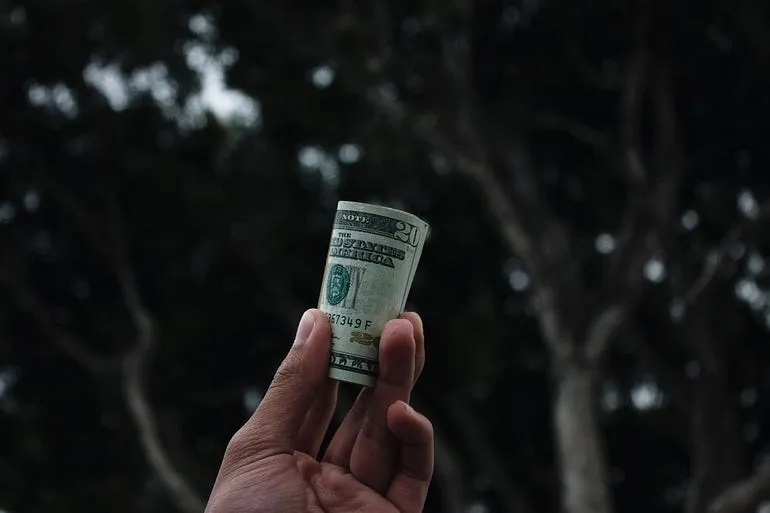
Photo by Vitaly Taranov on Unsplash
When it comes to shopping sustainably, it can be frustrating to see that more responsibly sourced and made products are pricier than the “regular” options. It can lead to the feeling that sustainable items are out of reach and only for those in certain tax brackets.
Don’t get me wrong, it’s hard to find affordable eco-friendly toilet paper, but by expanding “sustainability” to not only include the products you shop for, but also how, when, where, and why you shop, you’ll find that it’s accessible and better for your wallet than the supposedly cheaper options.
Below are five sustainable shopping practices that save money and will aid in your pursuit of financial independence.
Buy less
I know, not a shocker that buying less stuff means spending less money, however, sustainable purchases and actions not only reduce waste, but oftentimes cut costs because you are purchasing items that last longer, are generally reusable, and require less replacement, if any replacement at all. For example, I purchased a reusable stainless steel water bottle and do not buy disposable water bottles. This reduces my plastic consumption as well as my grocery budget. Analyze what disposable items you spend money on and decide whether or not you truly need them.
Buy secondhand
Buying things new does not necessarily mean they’re better quality. The likelihood that an item you need can be purchased secondhand and in great condition is extremely high. By buying items secondhand, you are reducing the amount of products that are sent to landfills, offsetting the carbon emissions involved in making new products, avoiding further contribution to its likely problematic industry (think fast fashion), and paying less. Garage sales, OfferUp, eBay, craigslist, and thrift stores are just a few of the many outlets to find secondhand goods. That stainless steel water bottle I mentioned earlier? I bought it for $4.00 at a thrift store.
Upcycle
When an item is no longer being used, rather than deeming it trash, it can be turned into or “upcycled” into something else you need. Have expired credit or debit cards? Chop them up into guitar picks. Empty glass jar? You’ve now got a storage container or vase. Old unwearable t-shirt? You have yourself a new reusable cleaning rag! Upcycling and repurposing items gives them new life, prevents waste, and spares you from spending more money.
Use everything
In addition to “upcycling” items, rethinking when things have actually been used up is a game changer. This is especially important in regards to food. There are numerous recipes you can make from food scraps (if you’re guessing it’s a lot of soups, you are correct) and many uses for parts of produce or meat that tend to get tossed out. For instance, strawberry tops can be added to smoothies for extra greenery and citrus peels can be candied into tasty treats – more bang for your buck in regards to your food budget and there’s no waste. Check out the Farmers’ Almanac as a resource for more ideas of how to get the most out of (almost) anything.
Make items instead of buying them
The more you venture down the sustainable route, you’ll find that it might lead you to start making items instead of buying them. Doing so means less packaging, cheaper costs, and more crafts — win, win, win. I myself have found that making some of my own bath products such as lotion and lip balm is much easier and cheaper than I had expected. They also require many of the same components, so because those purchased ingredients are multipurpose, there’s less shopping trips and increased savings.
You can find lotion recipes here and lip balm recipes here.
For an even quicker and easier way to make your own bath products, you can buy “concentrates” (i.e. solid blocks that just require the addition of boiling water to form the product) of conditioner, lotion, shampoo, bodywash and handwash from the company Ethique for $10 or less. For 20% off any purchase over $1, you can use this link (or enter discount code LL-S9YLQN32 at checkout). I’ve tried the bodywash and lotion concentrates and enjoyed both.
I could go on and on and on as to how environmentalism and finances are connected, but the bottom line is that it’s not simply based on a eco-friendly product’s price tag. An overall shift toward sustainability has big payoffs for the planet and building wealth.
Many people tout the phrase that, “time is money,” but at the rate climate change is progressing, there’s little time left and we’re all broke. Sustainability provides a clear path to saving money and ensures that Earth isn’t destroyed in the process of doing so.
For links to discounted sustainable products (including eco-friendly toilet paper), you can visit my Freebies page here.






